The ZenBivy Ultralight Bed 10 consists of a sheet and quilt that integrate into a bed-like system that is draft-resistant, supremely comfortable, flexible, and non-restrictive, especially for “rotisserie” sleepers who change positions frequently in the night.
For a backpacking sleep system, one has historically had to choose between a quilt and a sleeping bag, each with its benefits and drawbacks. A sleeping bag is draft-free but heavy and has a fixed girth, so it’s either restrictive or has lots of dead-air space to warm up. A quilt is lighter weight and has variable girth (meaning you can snug it around you to warm up or drape it loosely to cool off). But this flexibility makes it prone to drafts. In contrast, ZenBivy combines the benefits of quilts and sleeping bags while minimizing their drawbacks. The solution is remarkable.
Specifications
- Product tested: Ultralight Bed Ultralight Quilt + Ultralight Sheet) at the 10F temperature rating, with a regular width (20” wide) Ultralight Sheet.
- Manufacturer’s Weight Total: 2 pounds, 0.7 oz. (Ultralight Sheet: 6.7 oz + Ultralight Quilt: 1 pound, 10 oz.)
- Tested Weight Total: 2 pounds, 1.3 oz. (Ultralight Sheet: 6.6 oz + Ultralight Quilt: 1 pound, 10.7 oz.)
- Manufacturer’s Dimensions, UL Quilt: (the manufacturer gives the dimensions for cut fabric, with the note that “filled, lofted quilts will be several inches smaller in both length and width.”): 72” x 54”
- Tested Dimensions, UL Quilt: Approximately 68” x 52” semi-rectangular shape, coming together into a fixed foot end panel
- Tested Dimensions, UL Sheet: Half-length (39” long), usable for short, regular, or long mattresses up to 20 inches wide.
- Fabric (both quilt and sheet): 10D Pertex Quantum 280x250T, fluorocarbon-free DWR
- Insulation: 900 fill-power ExpeDRY fluorocarbon-free water-resistant 90/10 goose down
Sheet and Quilt Integration
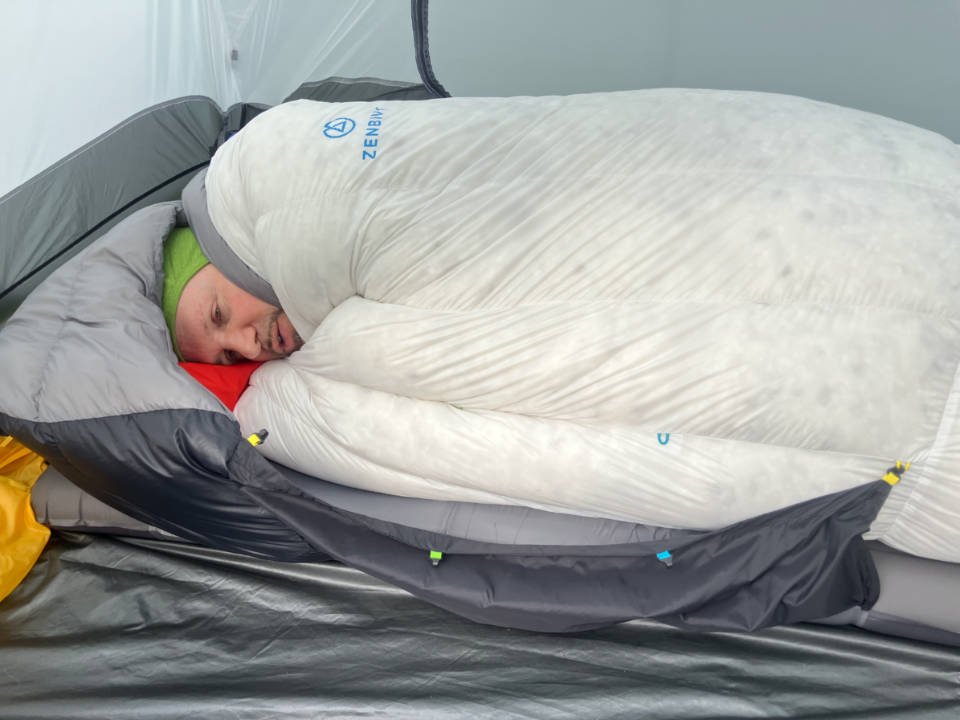
How does it work? The ZenBivy sleep system comprises two pieces:
- a fitted, hooded half-sheet with flaps and plastic hooks on both sides
- and a quilt with loops that clip to the hooks on the half-sheet
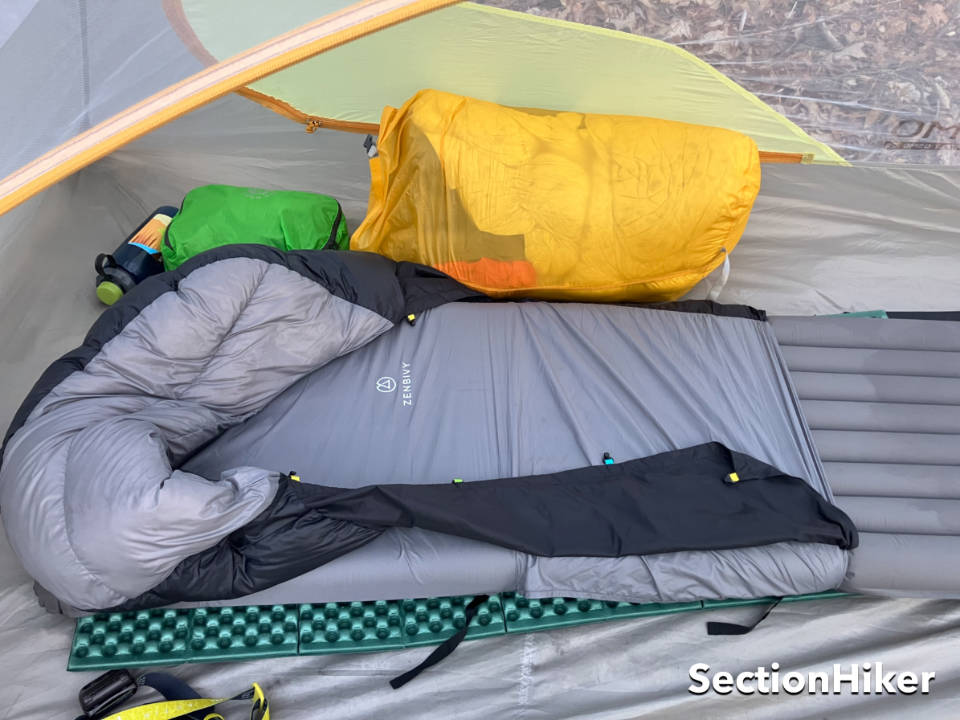
The loops are set about 25 cm in from each side, so the flaps overlap the edges of the quilt and block drafts. Unlike pad attachment straps that pin the sides of a quilt tightly to the pad, negating the benefit of variable girth, these flaps, when attached to the quilt, leave the edges of the quilt free. This allows you to snug them around yourself for warmth while also permitting the quilt to move and expand without letting in drafts.
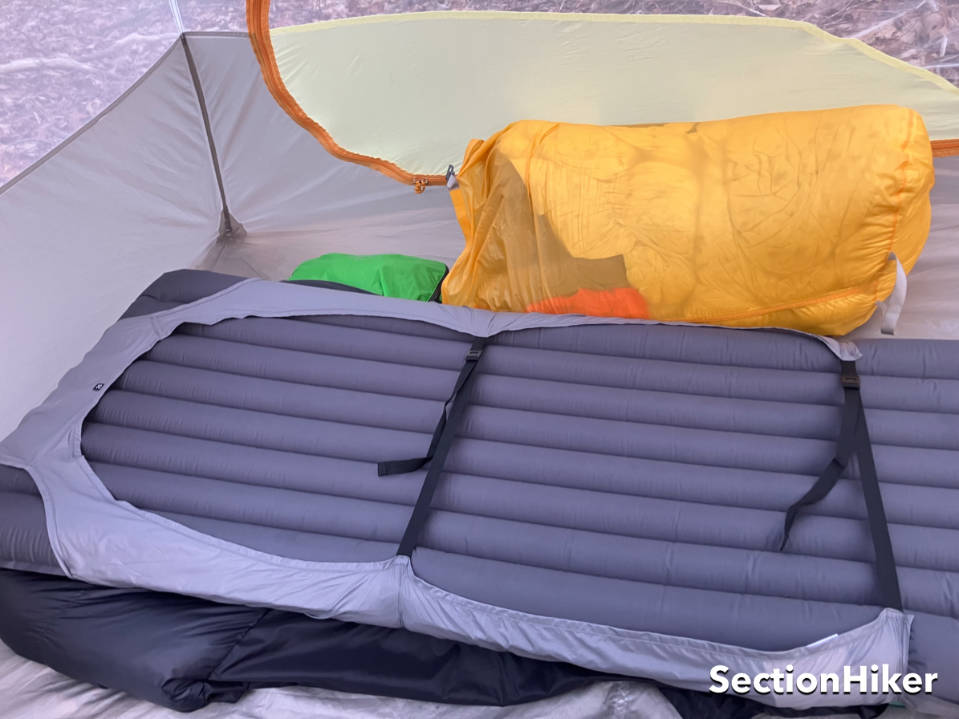
You can clip all of the loops and hooks together to batten down the hatches, but my favorite way to use the system is to leave two or three of the hooks on one side unclipped (the side I’m facing when lying on my side) and wrap that side of the quilt tight around myself while leaving the other side clipped to prevent drafts on my back. Leaving one side mostly unclipped also makes it easy to exit in the middle of the night–as easy as pushing aside your comforter at home.
Oversized Hood
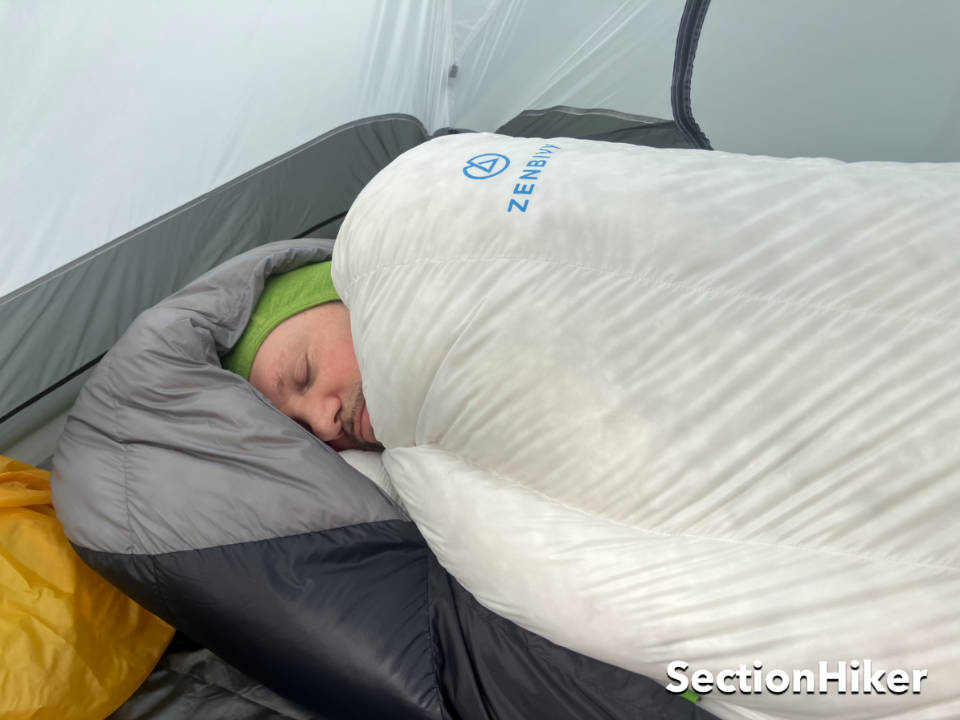
Using the oversized hood is much less claustrophobic than wearing a separate balaclava-style down hood with a quilt system. You can toss and turn without getting smothered by a mummy-style sleeping bag-attached hood. You put the pillow inside the hood and slip the hood over the top of your head. The cut of it allows you to move from side to side without restriction and helps ensure that your breath always exits the bag.
As of 2024, all ZenBivy Sheets, including the Ultralight Bed, have “Headboard Clips” inside the hood, allowing you to clip 2024-and-beyond models of ZenBivy pillows in place so they don’t move around. My ZenBivy pillow is from the older system and doesn’t have the attachment points for clips, but I find the hood alone does just fine for keeping the pillow from moving around too much.
Fast Footbox
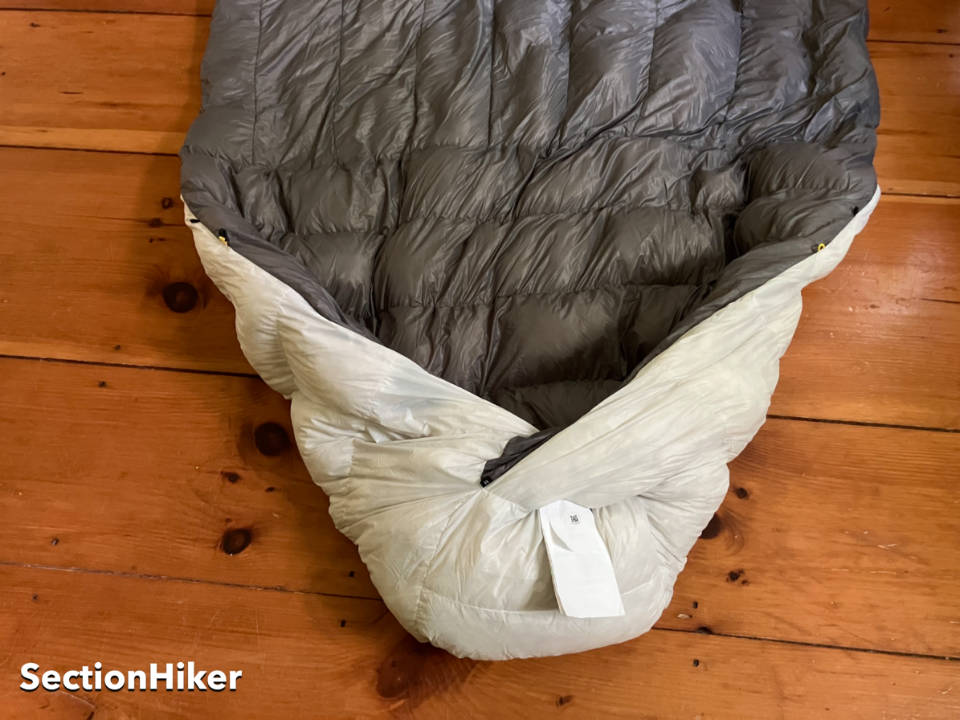
The 10F Ultralight Quilt has a “Fast Footbox,” which is a hybrid of a fixed (permanently closed) footbox and a convertible one. Their fully convertible footbox can be opened flat and closed in a couple of different configurations, which created some consumer confusion, especially since one had to dig into the ZenBivy videos to understand how to configure them.
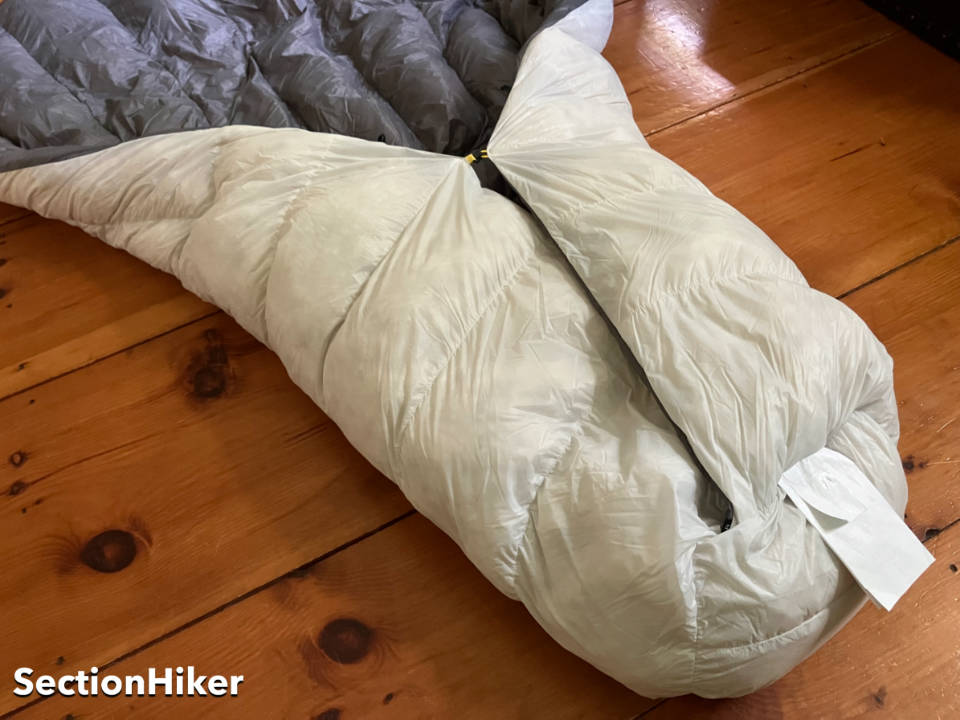
The Ultralight Quilt’s Fast Footbox can’t be opened completely flat but has a sewn-in panel at the end and open sides. The sides can be closed up for warmth around the lower legs with a single clip or opened up for more width. On a typical quilt, the footbox is sewn up the sides to the user’s shins or knees.
Temperature Rating
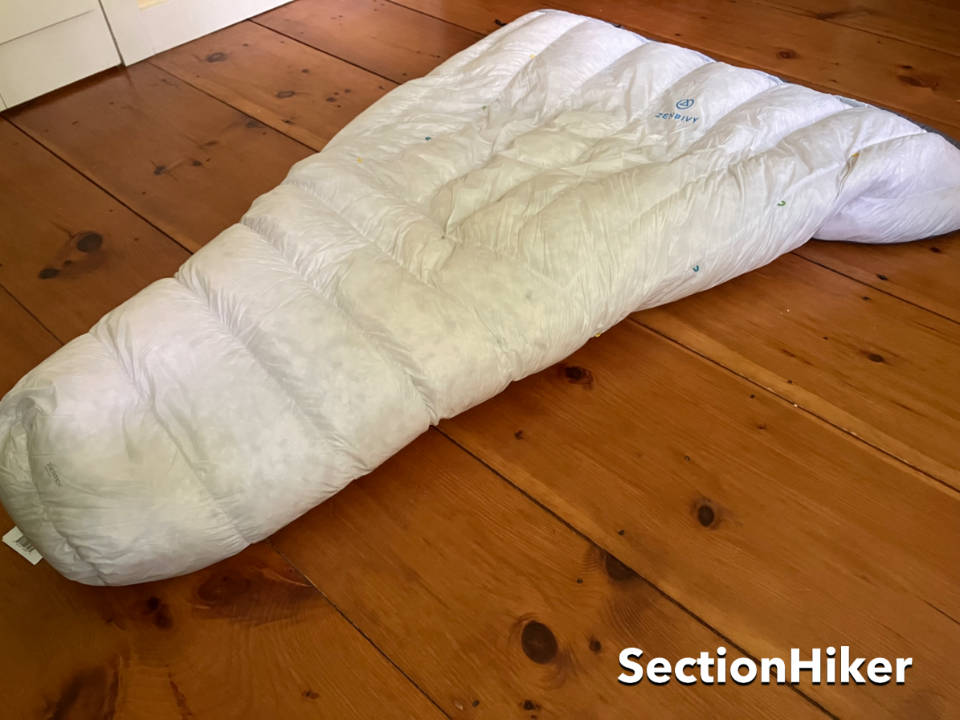
ZenBivy names its quilts by their Lower Limit Rating. The Lower Limit is the lowest temperature at which the average warm sleeper will feel comfortable. The Comfort Rating is the temperature at which the average cold sleeper, like me, will feel comfortable, typically 10 degrees higher than the Lower Limit. So, if you are a cold sleeper, add 10 degrees Fahrenheit to the named temperature (i.e., the Ultralight Quilt 10F would be warm to 20F). Note that these ratings are contingent on you using an appropriately rated mattress.
Innovative Neck Cinch
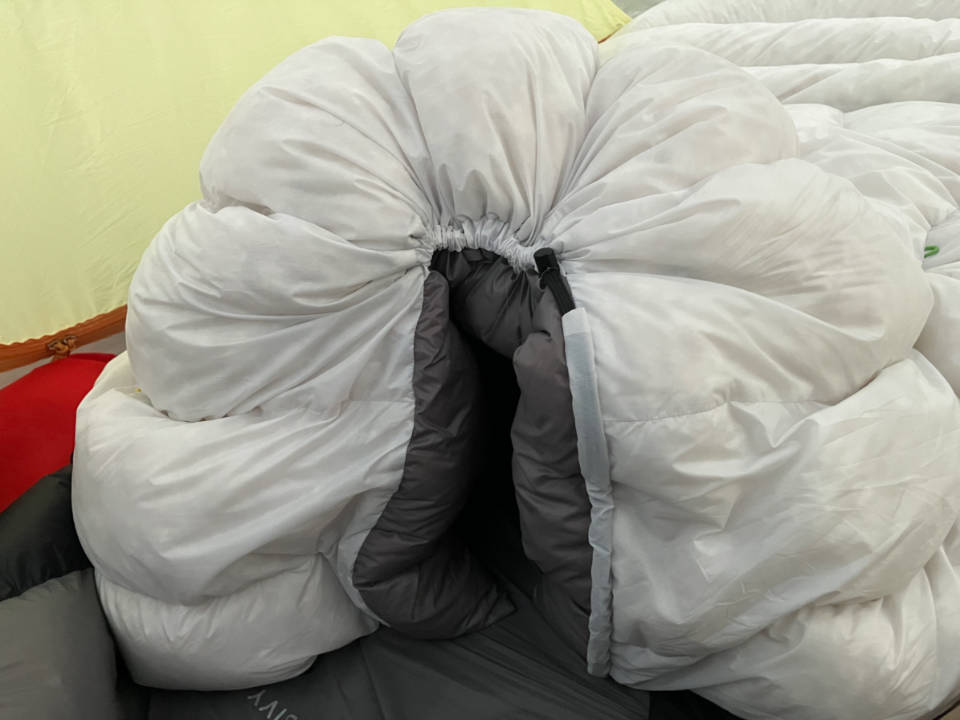
Most backpacking quilts have a drawstring cinch and snap at the neck to keep out drafts. However, this feature is best for non-moving back sleepers. If you sleep on your side, it can feel restrictive and let in drafts as you move. The ZenBivy quilt solves this with an innovative neck cinch they call the “Kylie-Curve.” It is a drawstring that cinches only in the center of the quilt to curve the top around your neck and shoulders while leaving the edges of the quilt loose to tuck around you or into the Fast Sheet’s hood for warmth.
Mixing and Matching Pieces and Additional Accessories
The quilt and sheets have standardized placement of hooks and loops, meaning that any ZenBivy quilt can be used with any ZenBivy sheet, regardless of the year made, width, or size. I appreciate that Zen Bivy is keeping the attachment points standard and not changing them from year to year or from one size to the other, to force consumers to buy an entire new system if they get one new piece. The only items you have to coordinate are the sheet and mattress sizes: you can use any mattress, including closed-cell foam, that matches your sheet’s dimensions, including tapered ones.
Pairing a 3rd Party Quilt with a ZenBivy Sheet
SectionHiker recently received an email regarding our last ZenBivy review, asking if it was possible to pair a non-ZenBivy quilt with a ZenBivy sheet. Michael Glavin, the founder of ZenBivy, shares that one could cut patches of Tenacious Tape with a slit in the middle with a loop of cord pushed through and stick them on the quilt to match the placement of the hooks on the Sheet. There are two keys here for proper integration: using 1.8mm-2.0mm cord that will snap securely into the hooks, and placing the loops away from the edge of the quilt (Glavin recommends at least 25 cm away from the edges) so that the sheet and the quilt create a draft-free seal.
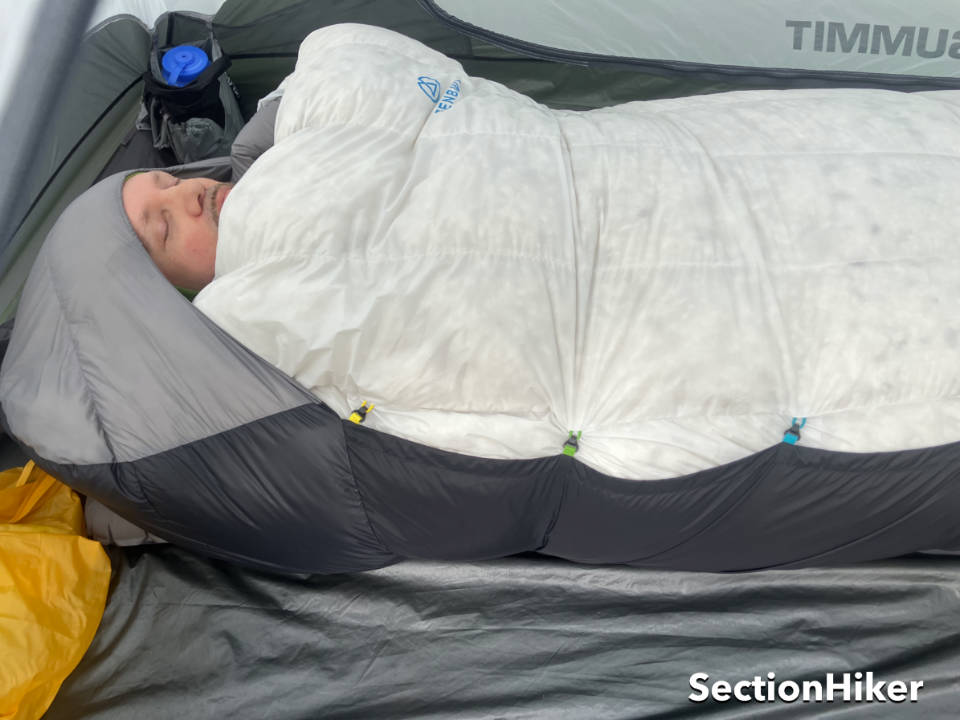
Recommendation
If you find sleeping bags too heavy and claustrophobic, quilts too drafty, and pad straps too fussy, the ZenBivy Ultralight Bed might be your Goldilocks sleep system. As an extremely light and sensitive sleeper who spent years resigned to getting bad sleep in the backcountry, the ZenBivy system provides the best sleep I have ever gotten on the ground. The weight reduction due to the materials and construction of the Ultralight Bed makes the system even more compelling for weight-conscious backpackers. Highly recommended!
Pros
- Supreme comfort: no restrictiveness or drafts for an active sleeper
- Reduced weight from previous versions
- Color-coordinated clips and loops make setup fast
- Modularity/ability to share pieces across different systems (mattresses and sheets are the only pieces that have to be the same size)
Cons (Room for Improvement)
- Make it easier to compare the specs of different combinations of items on the website
Disclosure: Zenbivy donated a UL bed system for review.
SectionHiker is reader-supported. We only make money if you purchase a product through our affiliate links. Help us continue to test and write unsponsored and independent gear reviews, beginner FAQs, and free hiking guides.
About the Author
Greg Pehrson is an ultralight backpacker who was bitten hard by the MYOG (make-your-own-gear) bug. He repairs, tinkers, and builds gear, often seeking to upcycle throwaway items or repurpose things from outside the backpacking world.
